One of my favorite destinations outside of Paris is the Loire Valley. Known as the Garden of France, this stunningly beautiful region is emblematic of so much of what I love about French style.
The history of the Loire Valley is closely associated with the 100 years war. From 1337 to 1453, French and English kings were fighting for control of the country. Eventually, battle lines formed along the Loire and Cher rivers with opposing forces constructing fortresses or “château fort” along the banks of the two rivers. When the war finally ended, the French Renaissance began and a majority of these fortresses were re-designed into the magnificent pleasure palaces or “château de plaisir” that we know today.
Getting to the Loire Valley from Paris is fairly simple. You can take a train from the Montparnasse station to the St-Pierre-des-Corps station in Tours. From there, you’ll need to hire or rent a car to tour the region. That said, I recommend renting a car in Paris and driving the entire route. It takes about two hours to get from central Paris to Chambord, the first château you will want to see. From there, you can head to your hotel, enjoy a relaxing dinner, and venture out first thing in the morning.
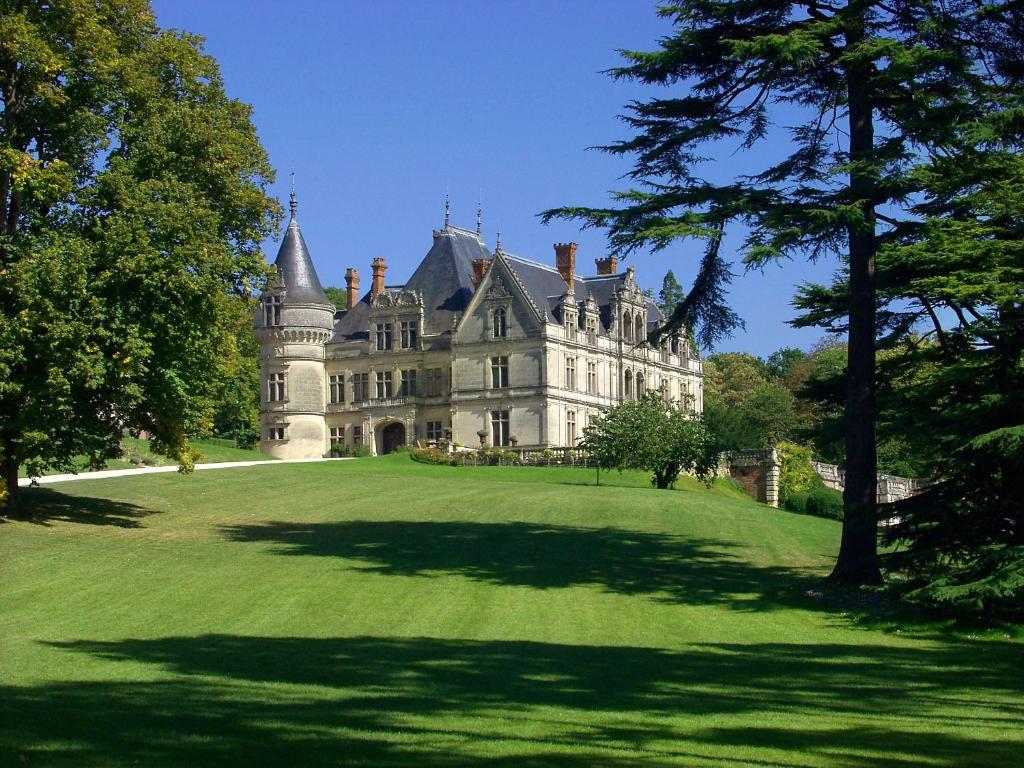
Where we stayed
Château de la Bourdaisière | We spent two nights at Château de la Bourdaisière and had a wonderful experience. The château dates back to the middle of the 14th century and was built as a fortress intended to defend the city of Tours against the assaults of the English. In fact, remnants of the original fortress can be seen on the grounds.
Château de la Bourdaisière is home to approximately 700 varieties of tomatoes. The gift shop sells an assortment of seeds and loads of garden supplies, kitchenware, and canned tomatoes. Every September the Tomato Festival takes place on the grounds. It’s a favorite event for locals and tourists alike.
On other occasions, I’ve stayed at Château de Noizay and Les Hauts de Loire. Both were fabulous and both have wonderful restaurants. I highly recommend them as well.
Where we explored
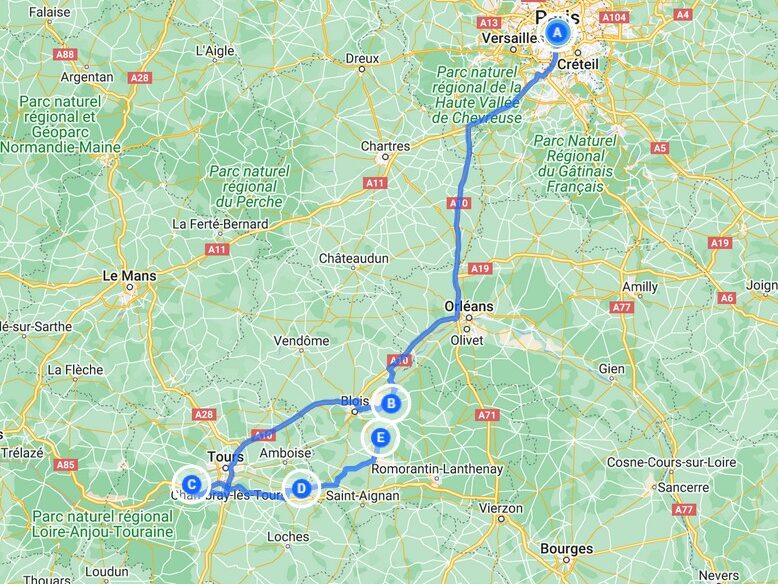
Chambord | Constructed at the behest of Francois I and completed under the reign of Louis XIV, Château de Chambord is a masterpiece of French Renaissance architecture – combining elements of medieval design with classical Italian influences of Leonardo da Vinci. Chambord is also the largest and most majestic of the castles. Its world renowned double helix staircase beckons visitors to the very top of the château for a magnificent view of the surrounding park, which is larger than the entire city of Paris.
Villandry | Château de Villandry is a gardeners paradise, offering perfect examples of French formal gardens. Together, six distinct gardens on four terraces include a water garden – with ponds and fountains, an ornamental garden with intricate patterns of perfectly clipped boxwood hedges filled with a variety of flowers, and an enormous vegetable garden. The views from the upper rooms of the château and the belvedere are spectacular.
There is a lovely restaurant on the grounds of the property called La Doulce Terrasse, which features seasonal cuisine prepared with regional products and vegetables from Villandry gardens.
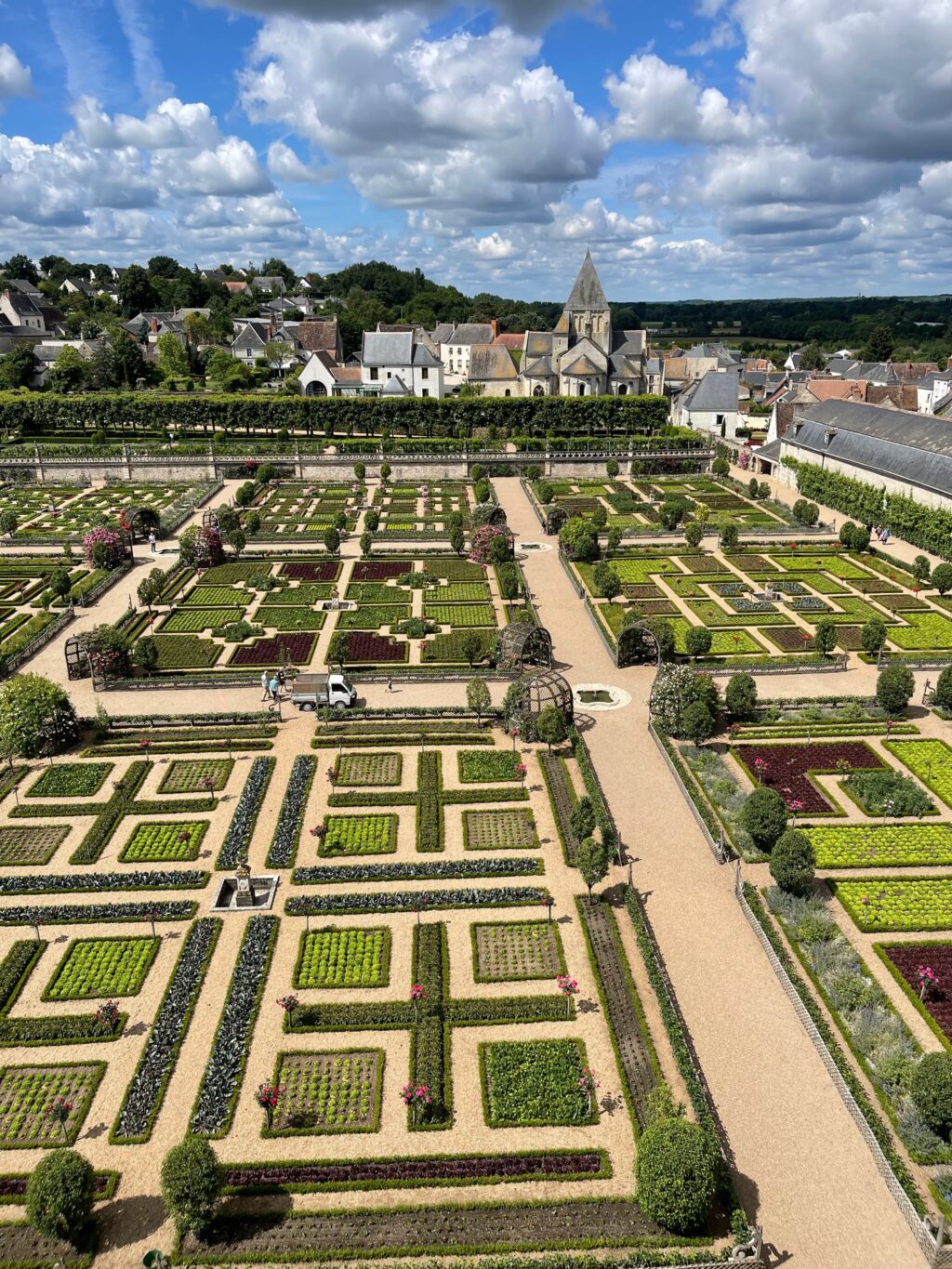
Chenonceau | Château de Chenonceau is one of the jewels of the Loire Valley. It is known as the “Château des Dames” or the ladies castle because it has always been inhabited by strong, powerful women, including Catherine Briçonnet, Diane de Potiers, Catherine de Medici, and Louise de Lorraine – each of whom increased its beauty and loved it dearly. In keeping with the feminine theme, Jean-Francois Boucher has been floral scenographer of the estate since 2015. Every week, he and his team create new floral arrangements for nearly every room of the castle. These ‘staged’ flowers emphasize the history of the estate just like any other piece of art or furniture. Chenonceau is definitely among my top five favorite chateaux of the Loire Valley.
Cheverny | Château de Cheverny is on my list of sites because it has been inhabited by the same family for more than six centuries and has genuine lived in feel. The interior decor is sumptuous, featuring porcelain, crystal, period furniture, and brocade fabrics. It’s a delight for anyone interested in fine and decorative arts.
The château sits in the middle of the a charming village and is surrounded by a labyrinth of gardens. It also boasts of a large kennel with more than 100 hounds – a mix of English Fox hound and French Poitevins. La Soupe Des Chiens or feeding of the hounds is a site to see. I recommend getting there 20 to 30 minutes beforehand to get a good spot.
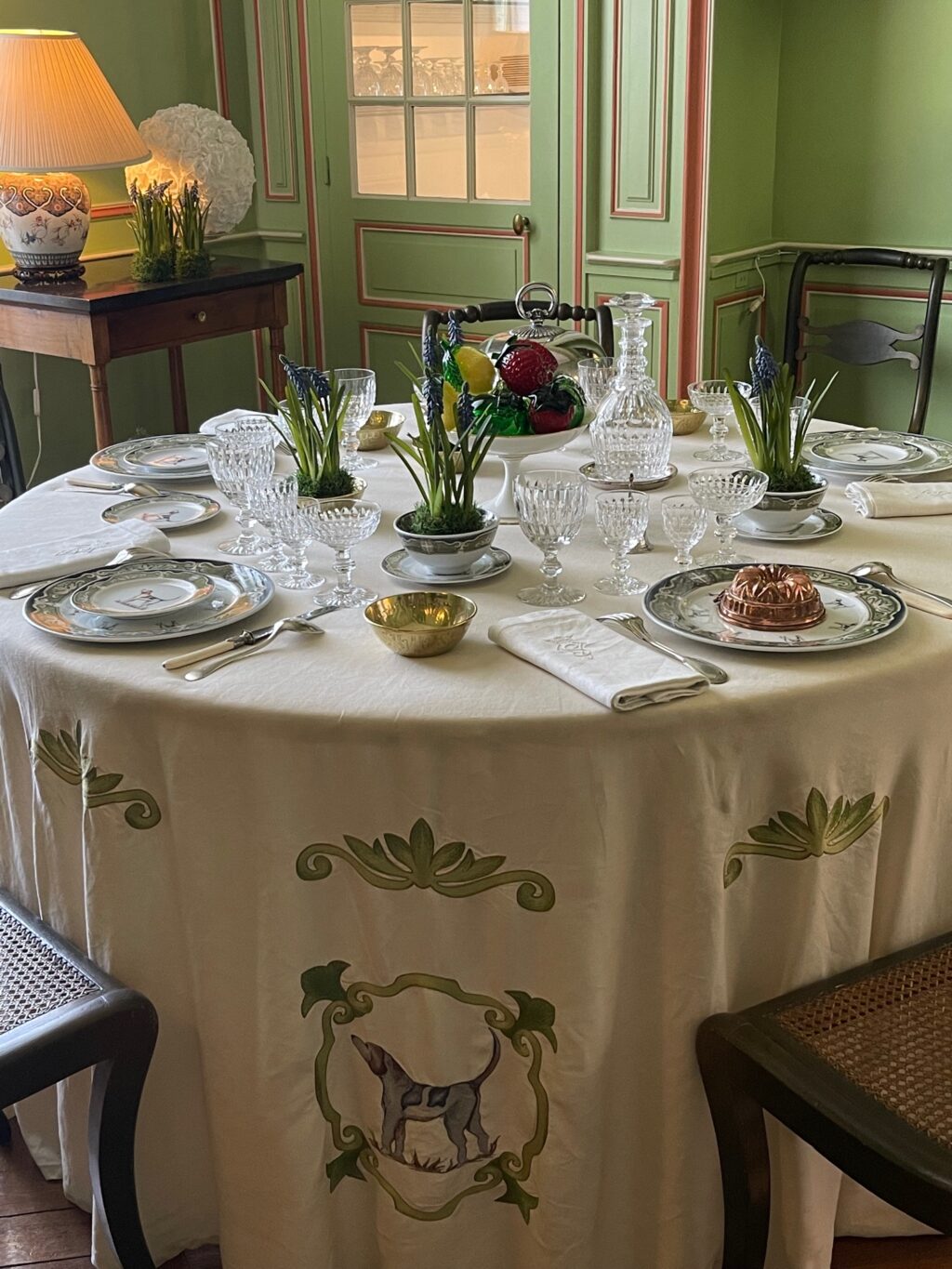
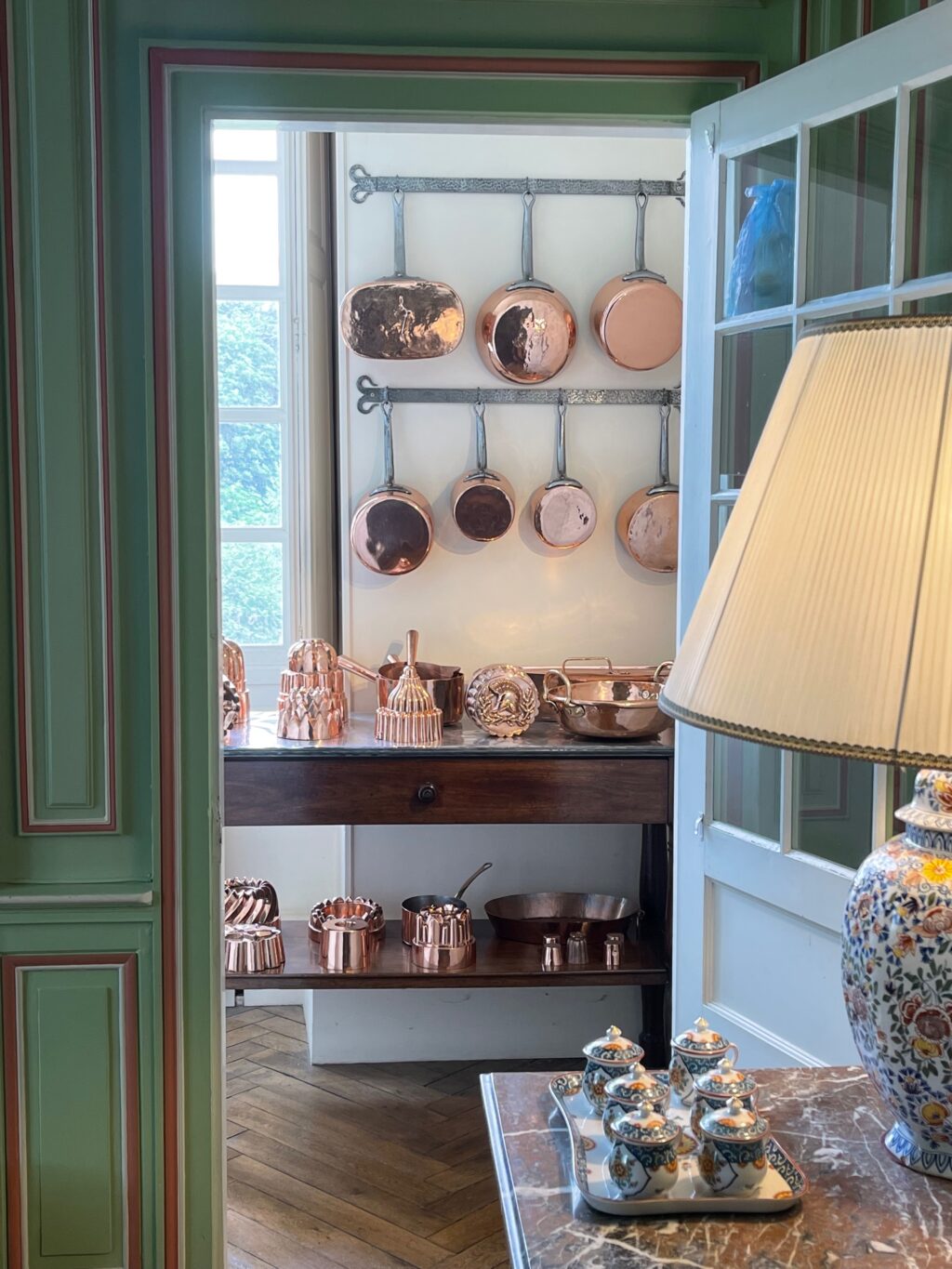

Where we ate
At the Château | Every morning we had a delicious continental breakfast at the Château de la Bourdaisière. Breakfast was included in the cost of our room for an additional fee. I highly recommend this option. It was so nice to wander down to the dining room every morning and take a seat at a beautifully set table – furnished with antique and vintage porcelain and silver. Furthermore, the selection of bread, viennoiserie, fresh fruit, confiture and butter was impressive, not to mention the delicious coffee and cream.
Additionally, we took lunch at the Chambord Café on day one and La Doulce Terrasse at Villandry on day two.
In-room dining | Like so many road trips I’ve taken in the past, we stayed in our suite for dinner, but it was not room service. Instead, we picked up a selection of gourmet treats from local markets and feasted on foie gras, bread, wine, and cheese at a small table overlooking the grounds of Château de la Bourdaisière. It was absolutely wonderful.
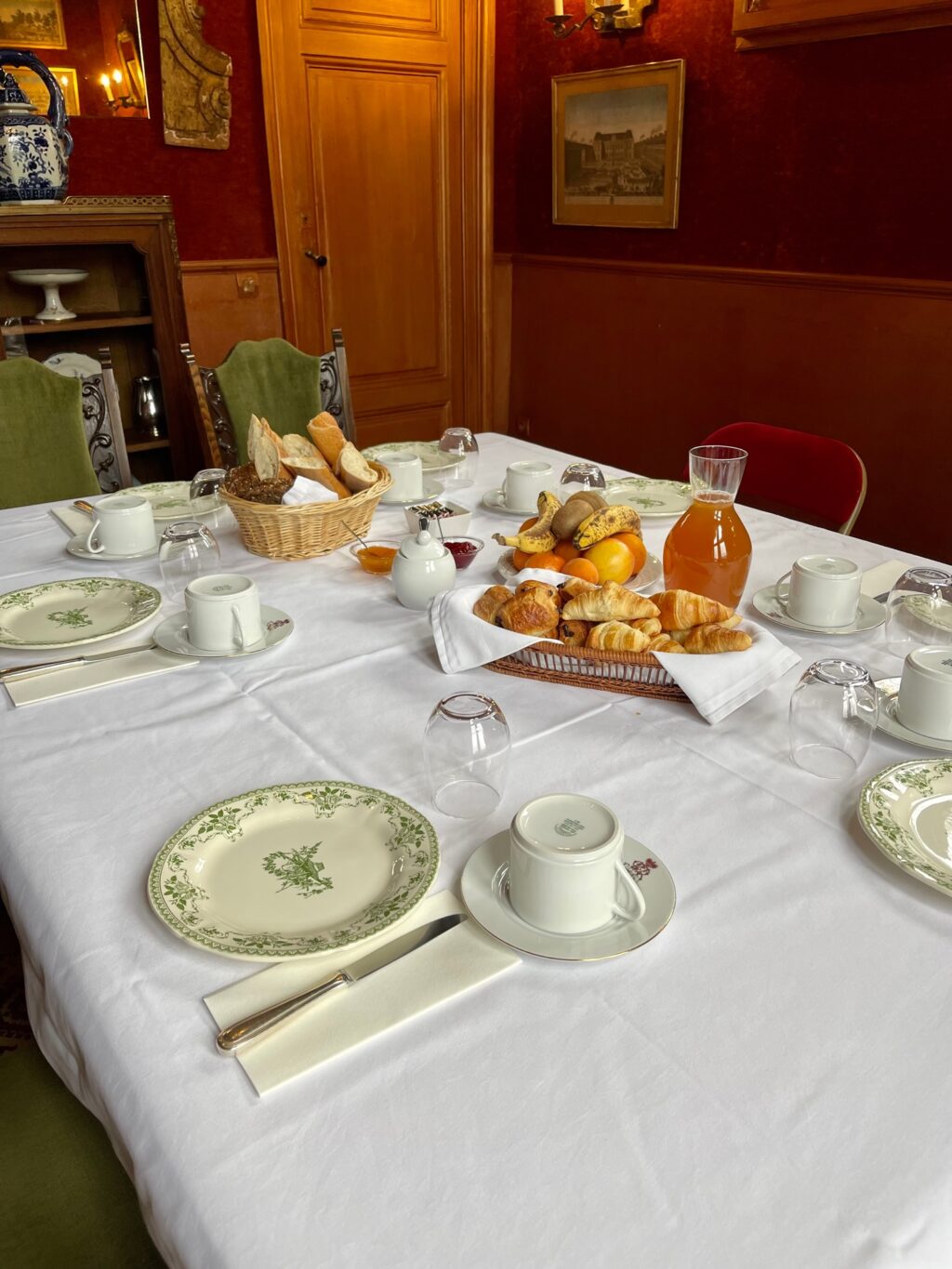
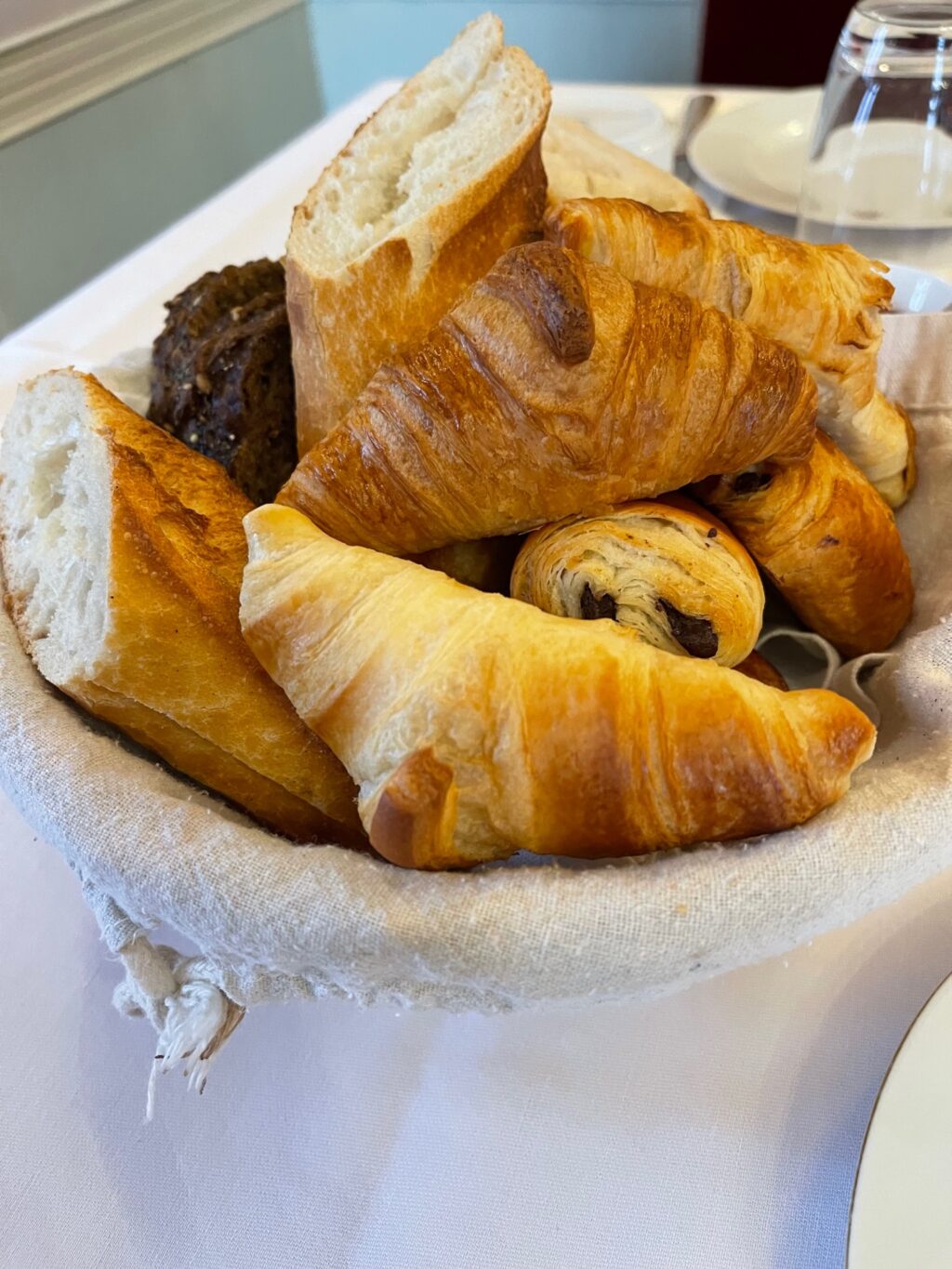



Leave a Reply